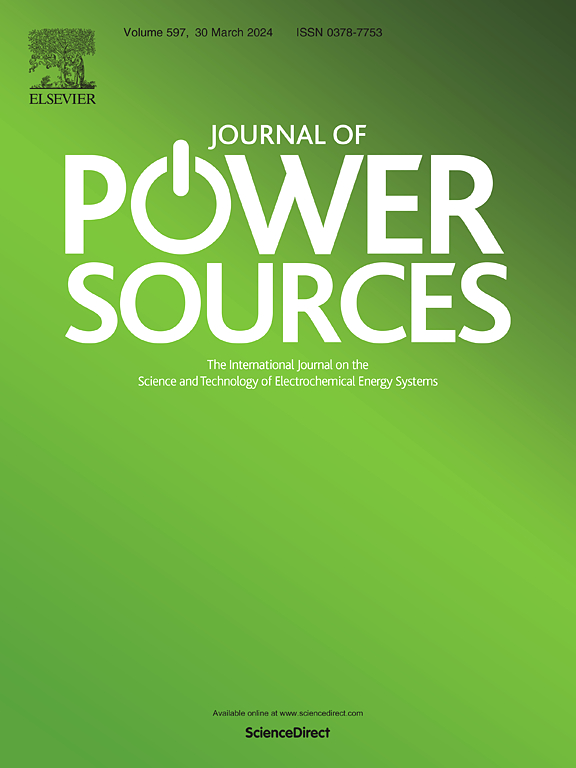阴离子交换膜电解工作——研究启动参数和启停操作对冷启动行为和降解的影响
IF 8.1
2区 工程技术
Q1 CHEMISTRY, PHYSICAL
引用次数: 0
摘要
水电解是绿色制氢的关键技术,阴离子交换膜水电解(AEMWE)具有良好的应用前景。未来的能源系统将需要瞬态电解操作,将电解与波动的可再生能源相结合。本研究从启动时间、能量需求和退化方面考察并优化了AEMWE堆叠系统的冷启动过程(从环境温度和0 V堆叠电压开始)。实验量化了电压斜率、目标电压、停机时间和加热策略等相关参数对启动过程的影响。因此,在启动过程中,电池电压的暂时增加代表了加速启动和保持低退化之间的适当折衷。此外,每个参数集有150次冷启动时的启停退化分析表明,启动过程中AEMWE堆栈的退化与最大电池电压无关,而是与电流斜率的陡峭度相关。利用电化学阻抗谱,降解被分配到电极过程。在中等启动条件下,观察到2-10 μV启动−1的降解率。这表明AEMWE与常规操作中断高度兼容。本文章由计算机程序翻译,如有差异,请以英文原文为准。

Anion exchange membrane electrolysis at work—Investigating impact of starting parameters and start–stop operation on cold start behavior and degradation
Water electrolysis is a key technology for the production of green hydrogen, with anion exchange membrane water electrolysis (AEMWE) showing promising properties. Future energy systems will require transient electrolysis operation to combine electrolysis with fluctuating renewably generated power. This study examines and optimizes the cold start process (from ambient temperature and 0 V stack voltage) of an AEMWE stack system in terms of starting time, energy demand and degradation. The influence of relevant parameters such as voltage slope, target voltage, downtime and heating strategy on the starting process is experimentally quantified. A temporary increase in cell voltage during the starting process thereby represents a suitable compromise between acceleration of the startup and maintaining a low degradation. In addition, the start–stop degradation analysis with 150 cold starts per parameter set reveals that the degradation of the AEMWE stack during the starting process is independent of the maximum cell voltage and instead correlates with the steepness of the current slope. Using electrochemical impedance spectroscopy, the degradation is assigned to electrode processes. Under moderate starting conditions, degradation rates of 2–10 V start−1 are observed. This shows that AEMWE is highly compatible with regular operational interruptions.
求助全文
通过发布文献求助,成功后即可免费获取论文全文。
去求助
来源期刊

Journal of Power Sources
工程技术-电化学
CiteScore
16.40
自引率
6.50%
发文量
1249
审稿时长
36 days
期刊介绍:
The Journal of Power Sources is a publication catering to researchers and technologists interested in various aspects of the science, technology, and applications of electrochemical power sources. It covers original research and reviews on primary and secondary batteries, fuel cells, supercapacitors, and photo-electrochemical cells.
Topics considered include the research, development and applications of nanomaterials and novel componentry for these devices. Examples of applications of these electrochemical power sources include:
• Portable electronics
• Electric and Hybrid Electric Vehicles
• Uninterruptible Power Supply (UPS) systems
• Storage of renewable energy
• Satellites and deep space probes
• Boats and ships, drones and aircrafts
• Wearable energy storage systems
 求助内容:
求助内容: 应助结果提醒方式:
应助结果提醒方式:


